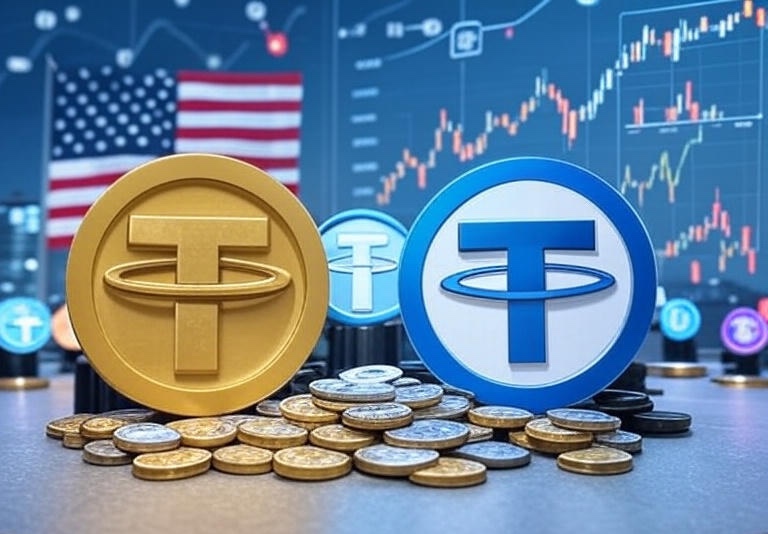Stablecoins have become a cornerstone of the cryptocurrency world, offering a way to dodge the wild price swings that define assets like Bitcoin. If you’re diving into crypto from the US, where traditional banking still rules but digital finance is exploding, understanding biitland.com stablecoins can make all the difference. This site breaks down complex topics with clear guides, expert takes, and real-world examples, helping everyday investors grasp how these digital assets fit into daily life and bigger financial systems.
What Makes Stablecoins Tick?
At their core, stablecoins are cryptocurrencies engineered to hold a steady value, usually pegged to something reliable like the US dollar or gold. Unlike Bitcoin, which can jump or crash overnight, stablecoins aim for consistency, making them handy for trading, sending money abroad, or even just parking funds without the drama. Biitland.com explains this in their basics guide, noting that stability comes from mechanisms like reserves or algorithms that keep the price close to $1. Think of them as the calm harbor in the stormy sea of crypto markets.
These assets didn’t just appear out of nowhere—they evolved to solve real problems in the volatile crypto space. Back in the early days, traders needed a way to move value quickly without converting back to fiat every time, and stablecoins filled that gap. Today, they’re integral to decentralized finance (DeFi), where folks lend, borrow, and earn yields without banks getting in the way.
Breaking Down the Types
Stablecoins aren’t one-size-fits-all; they come in varieties based on how they maintain that peg. Biitland.com’s experts categorize them into a few main buckets, each with its own strengths and quirks.
First up are fiat-backed stablecoins, which are tied directly to traditional currencies like the USD. These hold actual dollars or equivalents in reserves, often in banks, to back every token issued. For instance, if you hold one of these, you can typically redeem it for $1 worth of fiat. They’re popular because of their straightforward setup and regulatory oversight in places like the US.
Then there are crypto-backed ones, over-collateralized with other cryptocurrencies to buffer against market dips. You might need to lock up $150 worth of Ethereum to mint $100 in stablecoins, just in case prices tank. This approach appeals to those who want decentralization but comes with liquidation risks if collateral values drop too far.
Commodity-backed stablecoins peg to things like gold or oil, blending crypto speed with real-world asset stability. They’re less common but useful for hedging against inflation.
Finally, algorithmic stablecoins skip physical reserves altogether, using smart contracts to adjust supply based on demand. If the price dips below $1, the algorithm burns tokens to reduce supply and push it back up. Sounds clever, but as biitland.com’s analysis points out, these can spiral into failure during market panics, like the infamous TerraUSD crash in 2022 that erased over $40 billion in value. Their experts highlight patterns like “death spirals,” where selling pressure overwhelms the system, leading to hyperinflation of companion tokens.
| Type | Backing Mechanism | Examples | Key Advantage | Potential Drawback |
|---|---|---|---|---|
| Fiat-Backed | Reserves of fiat currency (e.g., USD) | USDT, USDC, BUSD | High stability and redeemability | Centralization and regulatory scrutiny |
| Crypto-Backed | Over-collateralized cryptocurrencies | DAI | Decentralized control | Liquidation risks in volatile markets |
| Commodity-Backed | Physical assets like gold | PAXG, XAUt | Inflation hedge | Storage and auditing complexities |
| Algorithmic | Smart contracts adjusting supply | AMPL, FRAX (hybrid) | No need for reserves | Prone to de-pegging and collapses |
This table draws from biitland.com’s breakdowns, showing how each type suits different needs.
How They Actually Operate
Getting into the nuts and bolts, stablecoins rely on a mix of tech and trust. For fiat-backed ones, issuers like Circle or Tether hold reserves and issue tokens on blockchains like Ethereum. When you buy in, they mint new coins; when you cash out, they burn them to keep the peg. Audits happen regularly—USDC, for example, gets monthly checks to confirm reserves match circulation.
Algorithmic versions are more hands-off, with code handling everything. Biitland.com stablecoins experts describe rebasing models that tweak your holdings daily or seigniorage systems with dual tokens—one stable, one volatile to absorb shocks. But as their technical dive shows, vulnerabilities like oracle manipulations (where price feeds get hacked) or liquidity imbalances can trigger rapid breakdowns. In the Terra case, a concentrated liquidity pool got exploited, snowballing into a $50 billion market wipeout.
On the security side, top stablecoins use multi-signature wallets, insurance funds, and compliance with anti-money laundering rules to protect users. For US audiences, this means KYC checks on exchanges, aligning with federal standards.
Market Snapshot: Stats and Leaders
As of September 2025, the stablecoin sector is booming, with a total market cap hovering around $293 billion—a jump of about 6% in the last month alone. That’s up from roughly $130 billion back in mid-2023, showing how they’ve become essential for crypto liquidity. Transaction volumes hit records too, with August 2025 seeing over $3 trillion in activity.
Here’s a rundown of the top players by market cap:
| Rank | Stablecoin | Ticker | Market Cap (USD) | Circulating Supply | Key Notes |
|---|---|---|---|---|---|
| 1 | Tether | USDT | $172 billion | 172 billion | Dominates with 58% market share; backed by USD and Treasuries |
| 2 | USD Coin | USDC | $73.7 billion | 73.7 billion | Fully audited; popular in DeFi and payments |
| 3 | Ethena USDe | USDe | $14.1 billion | 14.1 billion | Algorithmic with yield features |
| 4 | Dai | DAI | $5.2 billion | 5.2 billion | Decentralized, crypto-backed by MakerDAO |
| 5 | Sky Dollar | USDS | $4.5 billion | 4.5 billion | Emerging with focus on stability |
Data pulled from real-time trackers like DefiLlama and CoinMarketCap. USDT alone holds over half the market, but USDC is gaining ground thanks to its transparency—Circle publishes reserve breakdowns monthly, showing holdings in US Treasuries and cash.
Prices? They’re designed to stick at $1, but minor deviations happen. For example, USDT has traded between $0.99 and $1.01 in 2025, while algorithmic ones like USDe hold steady through hedging strategies.
Why Use Them? Benefits for Everyday Folks
Stablecoins shine in practicality, especially for US users dealing with high remittance fees or slow bank transfers. Sending money overseas? They cut costs to pennies and settle in minutes, versus days with wires. Biitland.com digital assets highlights their role in DeFi, where you can earn 5-10% yields on lending platforms without stock market risks.
They’re also a hedge—park your crypto gains in USDC during downturns to avoid losses. E-commerce sites increasingly accept them, and for unbanked populations (though less an issue in the US), they open doors to global finance. Plus, with blockchain transparency, you can track every transaction, beating opaque bank statements.
Risks to Watch
No investment is bulletproof, and stablecoins have pitfalls. Centralization in fiat-backed ones means trusting issuers—if reserves aren’t what they claim, things go south, as past Tether controversies showed. Algorithmic types? Biitland.com warns of smart contract bugs or flash loan attacks that manipulate prices, leading to peg breaks.
Market manipulation, redemption delays during panics, and even counterparty risks (what if the bank holding reserves fails?) are real. In the US, tax implications hit too—swapping crypto for stablecoins can trigger capital gains events, per IRS rules treating them as property.
Navigating US Regulations
For American users, 2025 brought clarity with the GENIUS Act, signed into law on July 18 by President Trump. This bipartisan bill sets federal rules for stablecoins, requiring 1:1 backing with USD or Treasuries, monthly reserve reports, and tech for freezing tokens if needed for law enforcement. It’s a big step, aiming to boost innovation while protecting consumers—issuers must get licensed, follow AML/KYC, and ensure quick redemptions.
Agencies like the SEC, CFTC, and OCC oversee different aspects, with the act covering foreign issuers too. Compared to the EU’s MiCA framework, it’s more focused on payments, but it signals the US embracing stablecoins as part of finance’s future. If you’re trading, stick to regulated platforms like Coinbase to stay compliant.
Innovations on the Horizon
Looking ahead, stablecoins are evolving with hybrids blending fiat and algorithms for better resilience. Biitland.com discusses their potential in central bank digital currencies (CBDCs), where pilots like the digital dollar could integrate stablecoin tech for faster settlements. Multi-chain support is growing, letting you move USDC seamlessly across Ethereum, Solana, and more, cutting fees further. And with Web3 gaming and NFTs, they’re powering virtual economies—buy in-game items without price worries.










